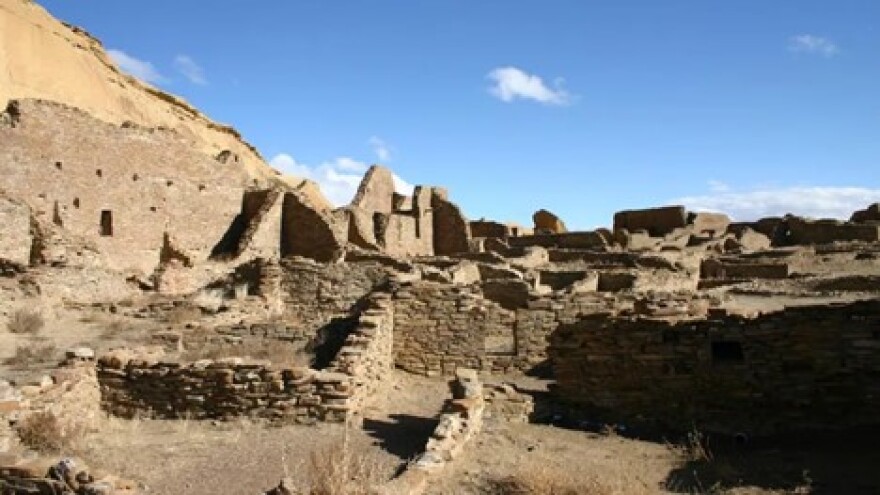The Ancestral Puebloans considered Chaco Canyon in present-day New Mexico the center of the world. They flourished there for centuries and built great stone houses. The courtyard of the largest house, Pueblo Bonito, held a mysterious pine tree known as the Plaza Tree.
Nearly a century ago, archeologists discovered the twenty-foot-long ponderosa pine lying beneath a layer of windblown sand. They imagined it was a relic of an ancient pine forest. But pines and conifers were rare in Chaco Canyon a thousand years ago, just as they are today. The people of Chaco traveled long distances to bring back timber to build the great houses.
Recently, scientists turned to tree rings for clues to the Plaza Tree’s origins. The width of the rings varies with the local climate. Just as DNA tests can show the relationships between family members, tree rings can reveal clusters of trees that grew in the same area.
The Plaza Tree’s rings most closely match trees in the Chuska Mountains, more than thirty miles to the west. The tree was more than 250 years old when it fell, or was cut, and was carefully carried to Chaco Canyon. But why was the Plaza Tree placed in the courtyard, instead of used for building material? It’s hard to be sure. Perhaps it stood in the plaza’s center as a ceremonial pole or sundial, or maybe it served as a bench or was intended for firewood.
Archeologists may never solve the mystery of the Plaza Tree. But today, Puebloan descendants still use pine trees and branches in ceremonies.



